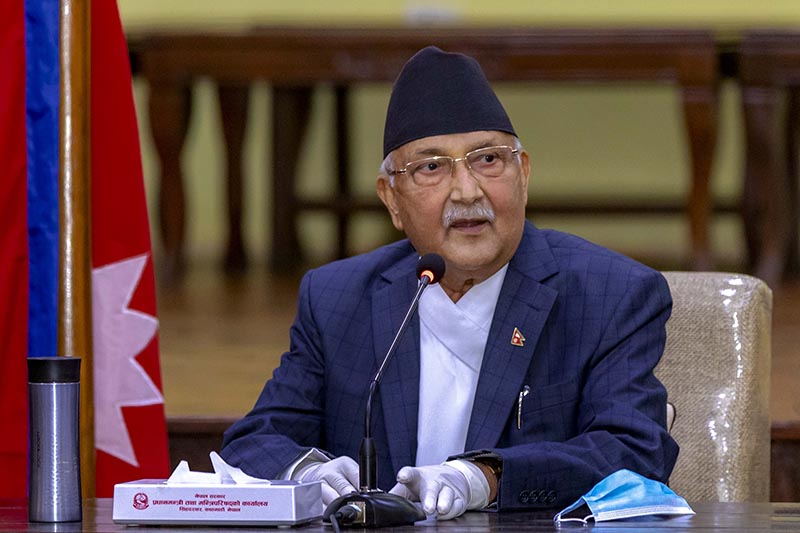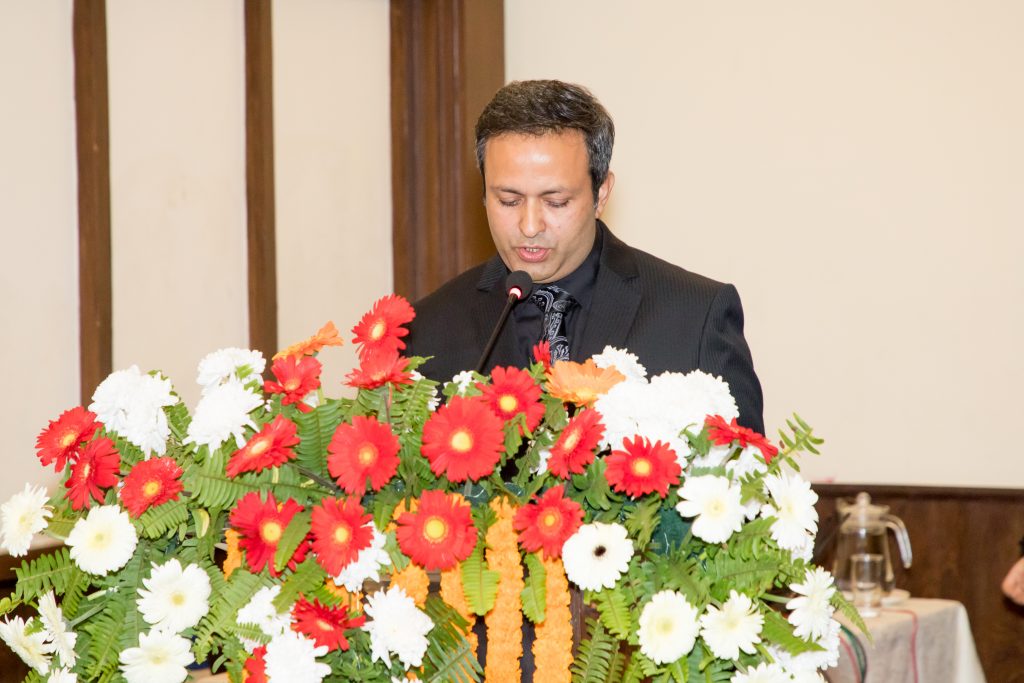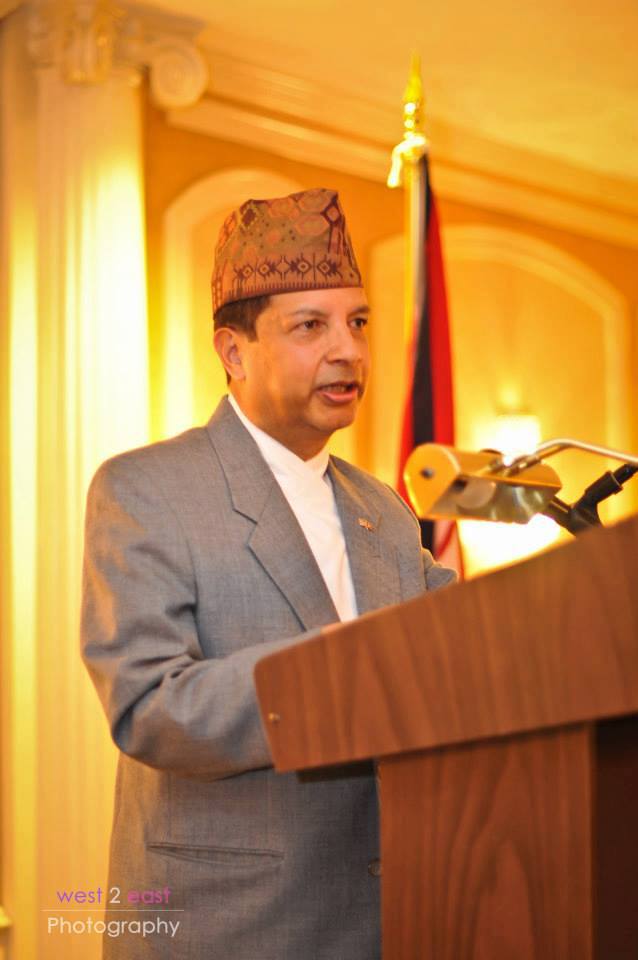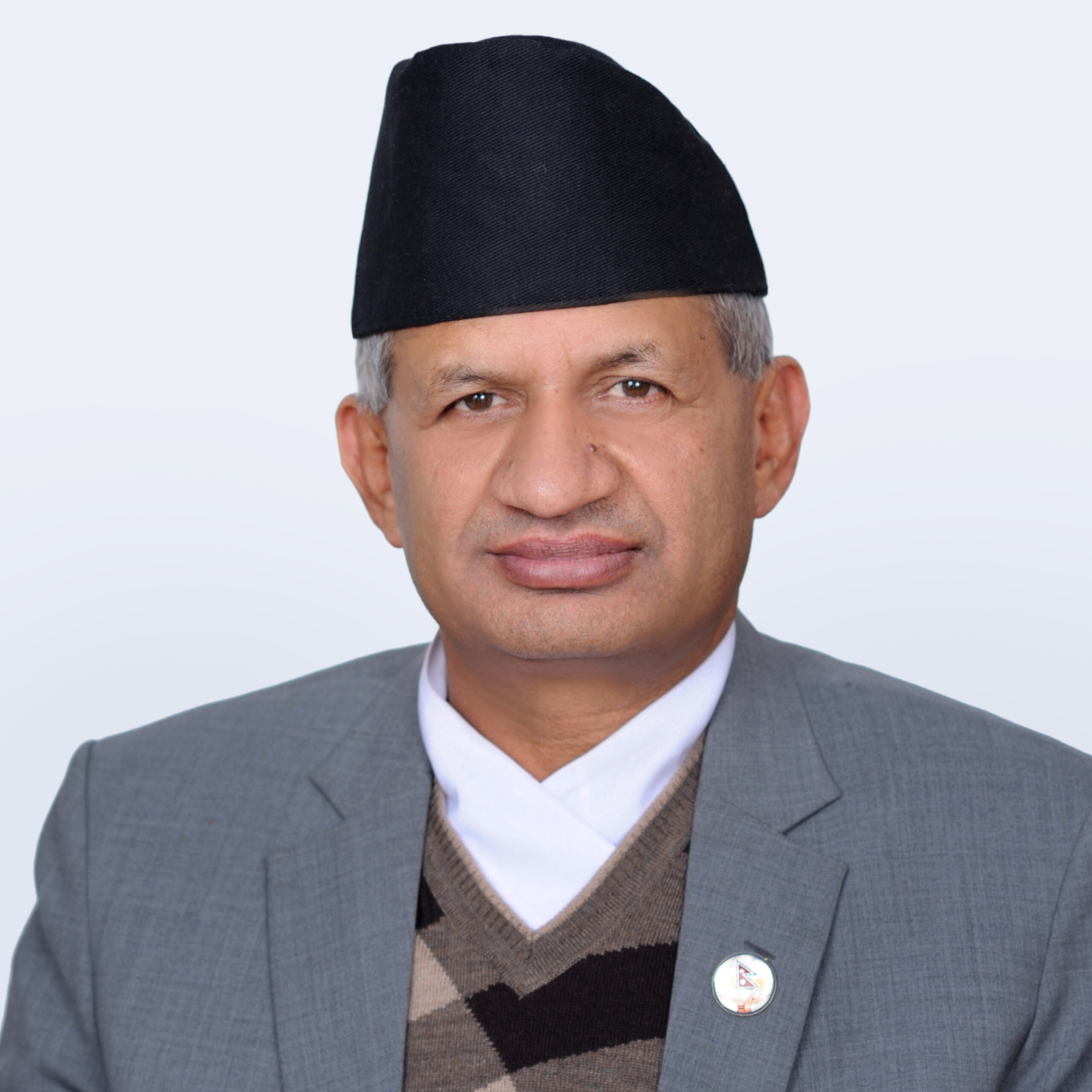No products in the cart.
One Belt One Road: An Opportunity for Nepal And South Asia
- Home .
- One Belt One Road: An Opportunity for Nepal And South Asia

Message from Rt. Honorable
Prime Minister of Nepal,
KP Sharma Oli
The event started by reading out the message received from the office of K P Sharma Oli, Rt. Honorable Prime Minister of Nepal. In his message, the Prime Minister expressed felicity in organizing the symposium by Nepal China Friendship Forum. The Prime Minister reiterated that Nepal and China shared strong socio-economic ties for centuries and that the friendly relations had further been consolidated over time.
The Prime Minister took the view that China’s ‘One Belt, One Road’ mission was for the shared benefit of its neighbors and that BRI could play an engine for the economic development of Nepal allowing increased access to its northern neighbor. He added, “One Belt, One Road is an opportunity for Nepal to shift its position from a land-locked to a land-linked nation.
Welcoming the participants including Chief Guest, eminent scholars, experts, journalists and other important participants, Dr Sharma worked around to the ‘One Belt One Road’ (OBOR) initiative which he emphasized as essentially a development strategy and a development framework proposed by President Xi Jing Ping of China. He elucidated further stating that the concept of the One Belt, One Road is to jointly devise a regional network of infrastructure
to help the countries in the region to enter the global economy with enhanced exchanges in terms of cultural diversification, technology transfer, thereby fostering the people-to people relation in the region. Dr. Sharma added that the concept is more about bolstering economy of the region with improved connectivity that helps coordinate the development strategies of the countries along the Belt and Road, grab the market potential in the region, increase FDI, create demands and job opportunities, develop people-to-people relation and cultural exchanges among the countries. It also benefits the nations with the sharing of each other's’ experience and expertise, NCFF President added.

Dr. Kalyan Raj Sharma
President NCFF
Being an economist I would rather like to speak from the South Asian perspective, particularly the economic roles of China and South Asia rather than making political or
strategic statements. Though China is not a South Asian country, some of the country’s provinces like Sichuan, Yunnan and others feel more attached to South Asia. China’s focus on South Asia is mainly guided by business or trade concerns, with focus on its import or export in the region. China has no structural plan to go abroadand invest in FDI. The least developed countries (LDCs) in South Asia, such as Nepal, Bhutan, Bangladesh, Sri Lanka, Maldives, Afghanistan and Pakistan except India, are not part of ARCEP, which is mainly an initiative made by China. Therefore, the concern in the South Asia is that
the LDCs are nowhere in this initiative. The other reason is that these countries do not get market access to China. India can sell some of its pharmaceutical products or IT professionals in Shanghai or some of the Indian companies may open up factories in China. However, the Chinese authorities do not allow the LDCs including India, to their market access.
The trade deficit is a huge challenge for India and othercountries. The South Asian LDCs are producing labor intensive products. They want to shift their positions from labor intensive to capital intensive producers and export these all over the world.
All we need now is a new trade regime, but is it coming up in a real sense?
There are two routes or the corridors. The first is trade route the TPP and ARCEP and the other is China’s belt and road initiative. The distinction between the two is that
Chinese belt and road is essentially the development of hard powers such as highways, ports, SEZs which involve cooperation whereas TTP or ARCEP focus mainly on commitments. If commitments come in place, we have huge future from belt and road initiative, particularly in the countries where there are tremendous amount of infrastructural deficits. A recent study suggests a total of 3 trillion dollars infrastructural investment for the whole Asia to realize this initiative.

Dr. Parbir De
Professor, Research and Information System for Developing Countries (RIS), New Delhi
President Xi Jinping during his visit of Central Asia and Southeast Asia in 2013 raised the initiative of jointly building the Silk Road Economic Belt and the 21st Century Maritime Silk Road.
Construction of infrastructure and establishment of regional public goods supply system are keys to China-Nepal win-win cooperation. Infrastructure networks are associated with ‘club goods’ wherein a defined number of participating countries, apparently in a form of sub-region, can benefit from spillovers. Thus, expanded or improved physical infrastructure, such as transport links and telecommunication, can significantly increase trade and transactions.
The ‘One Belt One Road’ initiative is open for cooperation. It invites all countries, international or regional organizations for engagements.In case of Nepal, improved transportation condition can give rise to a lot of transit trades which will add value to the goods produced by Nepal. Given Nepal’s position at the centre of the trade routes, the country can benefita lot. Once Nepal’s major cities are connected through OBOR, Nepal can benefit by reducing transportation costs significantly. Therefore, from the perspective of new economic geography, the improvement of traffic condition in Nepal is instrumental in accelerating its economic development.
The Chinese companies have the mature technology and efficiency to build high-speed railway and high-grade highways in plateau and mountainous terrains. Besides railways, they have interest in building Nepal’s domestic highway networks.
In South Asia, works need to be done to contain the problems such as pollution, communicable disease, and natural calamities like earthquake etc. since they are inherently cross-border in nature and sometimes lay beyond the control of individual countries.
Hence, China has will and potential to cooperate with the South Asian countries while exploring methods that regional public goods could be utilized along the ‘Belt and Road’ areas.

Prof. Huang He
School of International Relations and Public Affairs, Fudan University, Shanghai
This isindeed win-win situation if we could strategically move to realize ‘One Belt One Road’. Connectivity is integral to the building of belt and road which not only include the physical infrastructures but also the soft connections of rules and regulations as well as the connections among the people in the region.
The trade between China and Nepal is very dismal. If we take the statistics of 2014-15, the gross trade volume was less than 104 billion Nepalese rupees, out of which 101 billion was import from China only. Nepal still has more than two-thirds of its trade with India, so OBOR in essence help Nepal in its trade
diversification efforts.
More tourists can come to Nepal from the north. Nepal will also have transit advantage albeit psychological, can be extremely useful. We can also export to Tibet, if we consider the distance between the mainland and Tibet. In such case cement and construction materials can be exported from Nepal.
We need to develop our transport and infrastructure to reap the benefits since poor infrastructure is our major bottleneck. The chronic power shortage in Nepal is another bottleneck for development.

Dr. Shankar Sharma
Former Vice Chairman, National Planning Commission, Nepal
‘One Belt, One Road’ initiative is very important, farsighted, and a visionary approach especially for the developing countries. It is apparently re-innovation of the ancient Silk Road, which will rejuvenate human civilization or development in 21st century. Nepal is a land-locked country which might be both a natural gift and an adversity. But, we need to change our position from land-locked to land-linked nation. For this, we require very good infrastructures. We need broad connections and connectivity through roads, railways, pipelines, cross-border transmissions, high speed internet etc. The Prime Minister’s recent visit to China reached a10-Point-Agreement and 15-Point-Joint Statement, where Point No 5 clearly speaks about Nepal’s part in belt and road. There should not be any doubt when Nepal wishes to expand its connectivity with its neighbors. Developing countries should adopt their own model for development, and thus the developed countries should not impose their models upon the developing countries.

Mr. Pradeep Gyawali
CPN UML Leader
FLOOR DISCUSSION
Following the paper presentations from scholars, the floor was open for discussions as well as for questions and answers. A barrage of questions was thrown at the panelists. Those actively participating in the discussions included noted personalities namely Hiranya Lal Shrestha, former Nepalese ambassador to Russia, Purusottam Ojha, former Secretary (Government of Nepal), Prachanda Man Shrestha, former CEO of Nepal Tourism Board, and Ajaya Dixit, hydro and energy experts, among other participants.
In order to make Asia the centre of economic activity, we need development initiatives under belt and road. Given Nepal’s centrality in the region, the shortest corridor to link the region can be Thori-Keirung-Lhasa. It will help bring two largest populations closer.
Hiranya Lal Shrestha
Political, social and economic geographies should be considered for the holistic development of the region. India’s market access to China and vice-versa is crucial in their economic sustainability. In such case the question arises about how small LDCs between these two giants can be free riders.
Prachanda Man Shrestha
Arriving at big Chinese cities people are amazed with the infrastructures there. In the seventies the Chinese government built trolley buses in the Nepalese capital, but we failed to save this green energy user vehicle because of poor management. So, Nepalese leaders should learn from this example before embarking on OBOR initiative.
Ajay Dixit
Connecting China with South- Asia through Nepal can play a major role in Nepal’s economic development. There is provision of BCIM road in the initiative, but it is not clear whether Nepal is included.
Purusottam Ojha
Photos of One Belt One Road
13010600_218696595186945_3449548614846419336_n
etruiy
ftf
gfhjgjkuhjh
kddjtyutugfdyu
rdsytr7t8
redsr
saedytuy
ytru7yt
